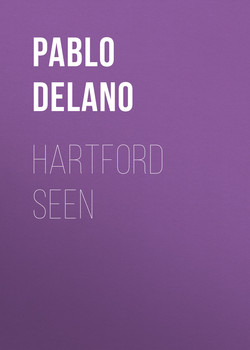Читать книгу Hartford Seen - Pablo Delano - Страница 11
ОглавлениеINTRODUCTION
Split City
Laura Wexler
Spring Street, 2013
A dilemma of divisions.
A failure of decisions.
But now has come a walker, with an eye.
Hartford has a brand new “Picture-Takin’ Man,” as James Van Der Zee once was known in Harlem.
Pablo Delano, a photographer and visual artist, teaches at Trinity College in the city of Hartford, where he has been professor of fine arts since 1996 and is affiliated with the Trinity Center for Caribbean Studies. When he first arrived after working for years in the South Bronx, he drove through the city, simply trying to get to his office from his home.
But soon, something in the trip began to speak, and then to call him out. Those drives to work began to urge him to produce more work. He slowed down, left the car, took his camera, and began to walk around. He photographed the Hartford that he began to see.
This city is a cohesive place, a ground for the dreams of other people who have also arrived from somewhere else. There are streets of Southeast Asians; long-standing blocks of African Americans; Peruvian, Brazilian, Mexican, Colombian, Honduran, Guyanese, and Salvadoran transplants from Latin and South America; Russians; Bosnians; whole neighborhoods of Jamaicans and Puerto Ricans. And others. They are united, not divided, by what Delano saw.
Hartford Seen, the result of that walking, is a layered landscape. The streetscape of Hartford overall is the brownstone, redbrick, and gray granite of New England’s older cities. Yet Delano perceives that it is also splashed with the saturated blazing hues of the island of Puerto Rico where he grew up, and other tropical places.
On the island, one rounds a green curve in the road and glimpses the blue ocean unexpectedly opening out on one side. In the city, there is the surprise of crossing a redbrick intersection suddenly to confront the yellow and pink of a joyously painted store.
On the island, one drives past a farm stand on the side of the road and backs up for the fresh fruit split open on display. Lush pulp and slippery wet seeds are temptations to be seen out of the corner of an eye, but when finally held in the hand they are also their own reward. In the city of Hartford, such pleasures are no less present. There are bright places to sit and eat at the West Indian or Latin American markets, island fruit—tamarind, mango, papaya—and any provisions or seasoning you might wish to buy. Yucca, taro, plantains, yam, and breadfruit are found all over Hartford. The beach is a happy painting on the Paradise Market wall.
Few people are visible in Hartford Seen. But truly, people are everywhere in evidence. The grocery store is orange and green? Some transplanted soul has refused to bow. A bright yellow furniture store is successfully grafted onto an aqua brick tenement? A green thumb always ran in the family. A painted lady—the slang name for enormous wooden Victorian houses of a certain age—faces Capen Street, admittedly a little the worse for wear. Someone has colored the pillars on her porch with the exact shade of “Fire & Ice,” Revlon’s best-beloved lipstick since the 1950s.
Such small signs are sufficient to reclaim the old Puritan city for those it once enslaved. The renaming of a church. The renaming of a street. The renaming of a business. The modesty of these marks belies the true extent of what has changed.
